2023 911 Dakar: Porsche blesses your wildest off-road fantasies
Planning some off-grid desert camping anytime soon? Here’s something to keep in mind when you’re settling in for the night: If, by chance, you hear the sharp, crackling thrash of a modern sports car wafting over the empty wasteland, it’s not a sign of inadvertent peyote exposure. Just the all-new 2023 Porsche 911 Dakar, doing exactly what it does best.
While this loud, lifted, and leggy limited edition is the German automaker’s first off-road-focused 911 variant to ever enter production, this is far from Porsche’s first dirt bath. The inspiration for the new Dakar harkens back to the 1984 racing season, in which Porsche captured the gritty glory of a first-place finish at that year’s infamously treacherous Paris-Dakar rally.

A first-place finish … and its first time competing. Though quickly replaced in the next two events by the newer and more advanced 959, 1984’s 911-based trio of 953-gen 911s captivated the Porsche enthusiasts the world over and served as the cultural wellspring for all the Safari-style aircooled 911 builds now cultivating clout on social media.
It’s never been more popular—or socially accepted—to chop up an old Porsche in the name of off-road antics. But don’t reduce the new 911 Dakar to a fad-conforming cash-grab. According to multiple Porsche representatives on-hand at the Dakar’s debut event in Los Angeles, a production off-road 911 special could be found on Porsche drafting boards as far back as 2012, when the clandestine 911 Vision Safari concept underwent serious testing and consideration.
Ultimately, it all came down to timing. The 992 gen 911–based Dakar is a limited, low-production product requiring specialized tooling and componentry that would have disrupted production plans of other low-production variants. Consider that Porsche green-lit both the 911 R (991.1) and the 991 Speedster (991.2) around the same time, but production timelines pushed each to different sub-generations.

It’s finally time for some factory-sanctioned off-road fun. The 992-generation Carrera 4 GTS provides the baseline for the all-wheel-drive Dakar, an architecture that primarily includes the GTS-spec 3.0-liter twin-turbo flat-six, good for 473 hp and 420 lb-ft of torque. Porsche’s stellar eight-speed PDK dual-clutch transmission is the sole gearbox, with company officials citing the complex off-road driving modes unique to the Dakar as rather unfriendly to a three-pedal setup. More on that later.
The off-road capability of a stock 911 of any varietal is, ah, quite limited, so Porsche addressed just about every aspect of the Dakar’s platform. Elongated dampers and higher-profile all-terrain tires add just under two inches in ride height compared to a standard Carrera; in the toggleable “High” suspension mode, the active suspension jacks the front and rear up an additional 1.2 inches, a setting that’s available up to 105 mph.
In this highest of highs, you’ll find an extra 3.2 inches (a total of 7.5 inches of ground clearance) under the Dakar’s floor, accompanied by an approach angle of 14.2 to 16.1 degrees and a breakover of 19-inches, depending on driving mode. If you do smack into a small boulder while out in the wilderness, take solace in that most everything under the skin is either shielded or beefier than stock.
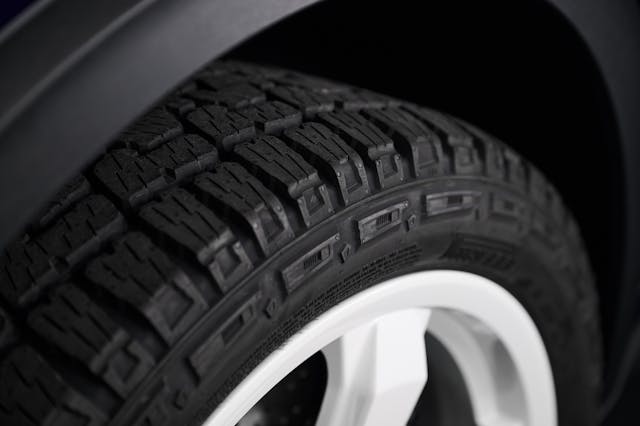
A set of spiffy, Dakar-specific wheels fill the wells. Porsche admits the wheels have no additional reinforcement over a standard production rim you might find on a streetbound Carrera, but what’s wrapped around them is what makes the biggest difference. Porsche worked with Pirelli on a set of Z-rated (149 mph+) all-terrain P Zero performance tires, specifically designed for high-speed off-road applications. For the lamer of heart, the Dakar can be optioned with a set of standard summer P Zeros, along with a specially ordered set of winter rubber. No matter the tire, a set of steel brakes from the Carrera S hide at all four corners with no upgrade option for carbon ceramics.
Even if you nab the summers, you’ll at least look the part. New, aggro front and rear Dakar-specific fascias hide steel bash plates just underneath the front lip, contrasted by a bright red aluminum tow-loop for recoveries and plastic lining on the wheel arches. Both the hood—a piece plucked from the 992-gen GT3—and the fixed rear wing are carbon fiber. Inside, it’s the same 992 cockpit we’ve come to know and enjoy. Aggressive bucket seats can be replaced with more comfort-oriented sport thrones, but with the rear seats ripped out to make room for the complex suspension lift mechanisms, this is exclusively a two-person experience.
The engine is especially over-proofed for harsh environs. The intake housing is fettled and fortified, hiding a new particulate filter presumably better suited to trap dust, silt, and sand. Desert racing is hot work, so Porsche cut out the GTS’ center intercooler and fitted the 3.0-liter six with a cooling system purloined from the 992 Turbo and Turbo S. This, along with uprated radiator and fans, should keep things frosty.

All on-board driving systems are also re-worked for the new Dakar, including the standard Porsche Dynamic Chassis Control (PDCC), Porsche Torque Vectoring (PTV), rear-wheel steering, and GT3-sourced active engine mounts. All this kit works in harmony with two new driving modes—Rallye mode and the aptly-named Off-Road mode, both of which replace “Sport Plus” and “Individual.”
These new modes are conceptually simple: Off-Road is best engaged for when traction is prioritized, and Rallye is for the slippery, slidy stuff. Toggling the former triggers the highest suspension setting—up to speeds of 105 mph—and works with the Dakar’s unique center differential to maximize the power split. Rallye shoves power primarily to the rear for high-speed, ass-out heroics. In addition to a traditional, tarmac-focused launch control system, a new Rallye launch program for loose surfaces is available in both new driving profiles, offering up to 20 percent wheel slip. Crucially, these systems bear no relation to the Taycan Cross Turismo’s Gravel mode.
All of this rally-raid weaponry has muffled the Dakar’s on-road capabilities. A 3.2-second 0-to-60-mph time on pavement is still spectacular, but you’ll soon run smack into the Dakar’s tire-limited 150-mph top speed against the base Carrera’s 182-mph apex. There’s no word on whether you’ll be able to raise the threshold with the optional summer tires, but we reckon not, for legal reasons. Porsche mentioned the Dakar cracked off the same Nürburgring lap time as a 996 (1999–2004) GT3, but didn’t specify on what rubber it was wearing.
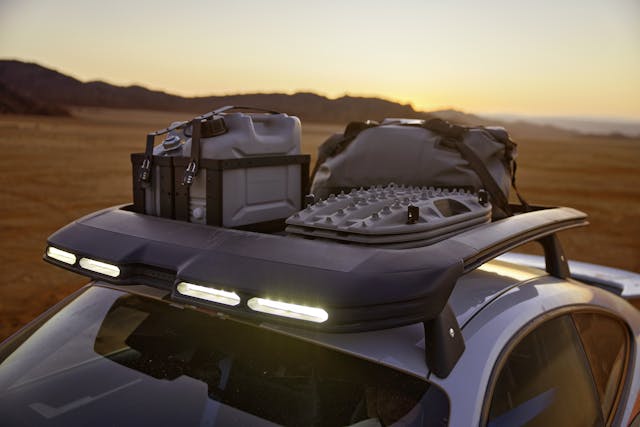
As this is perhaps the most “lifestyle”-oriented 911 we’ve ever seen, the Dakar launches with a wide range of Techquipment accessories. Details on the full catalog is scant, but we noted one of the debut Dakars wore the optional roof basket brimmed with neato toys, including Porsche-branded MaxTrax traction boards, branded jerrycan, and flashlight. A special Rallye Design Package adds a two-tone blue and white livery referencing the Dakar-destroying 953’s Rothmans’ colors along with a “starting number” graphic on the side of the car between 1 and 999. Porsche reps also confirmed a rooftop tent is in the works, so be prepared to see campgrounds filled with dirty Dakars sticky with s’mores residue.
Or maybe not. Only 2500 of these badlands bandits are earmarked for global production, so we imagine speculators and flippers will keep the majority off the road and out of sight. If you’ve got a shot at an allocation, expect to pay at least $223,450 for your new trail-terrorizing toy.
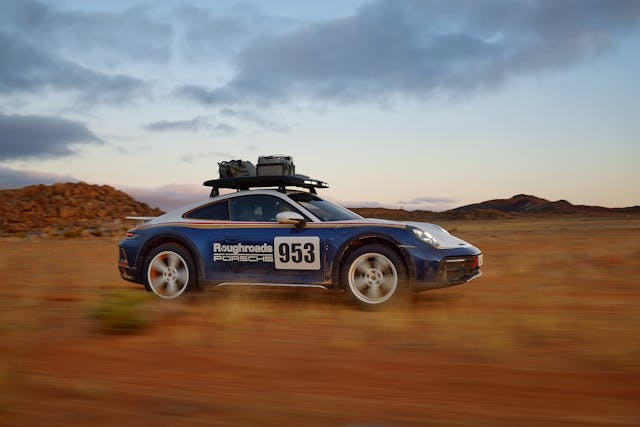
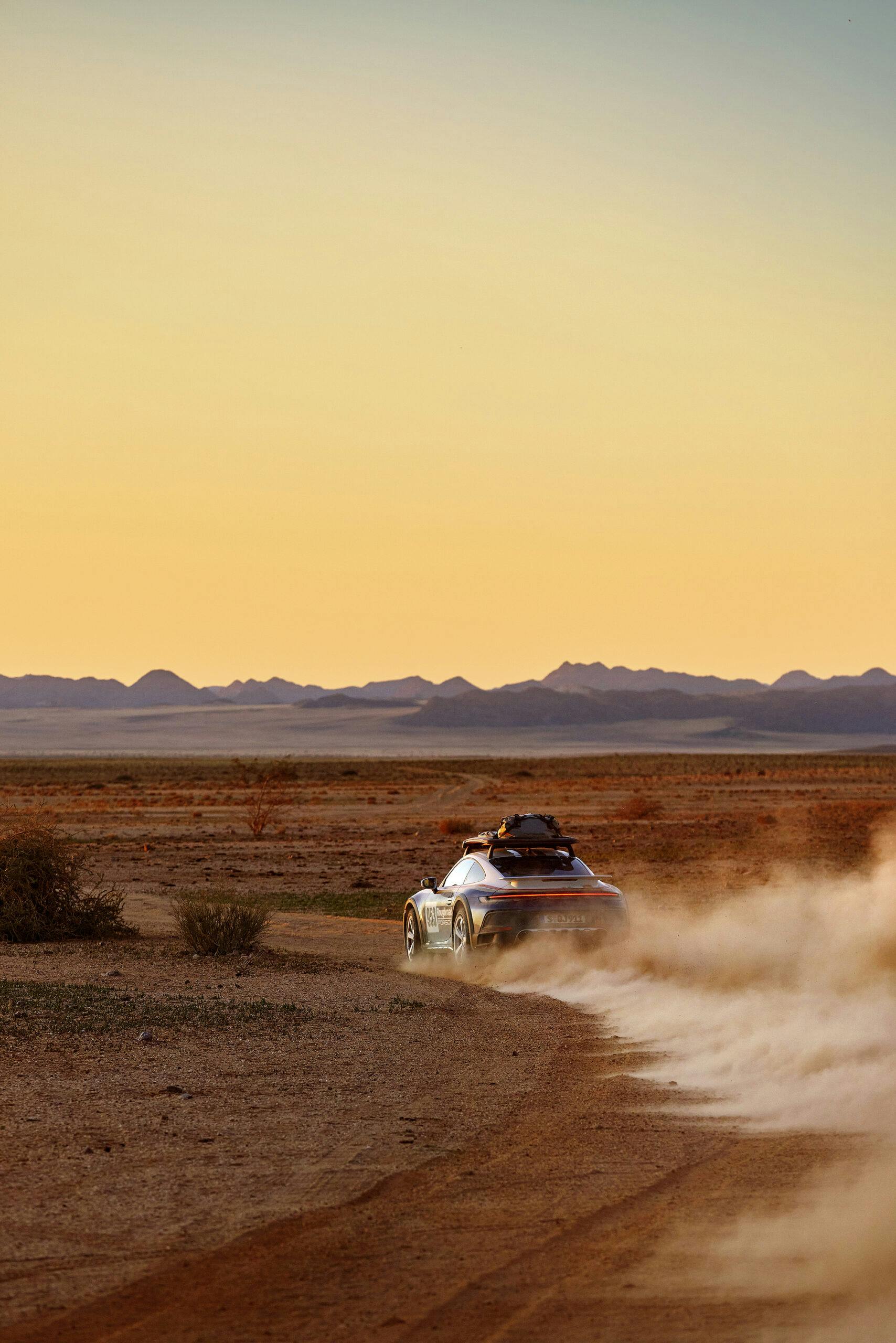
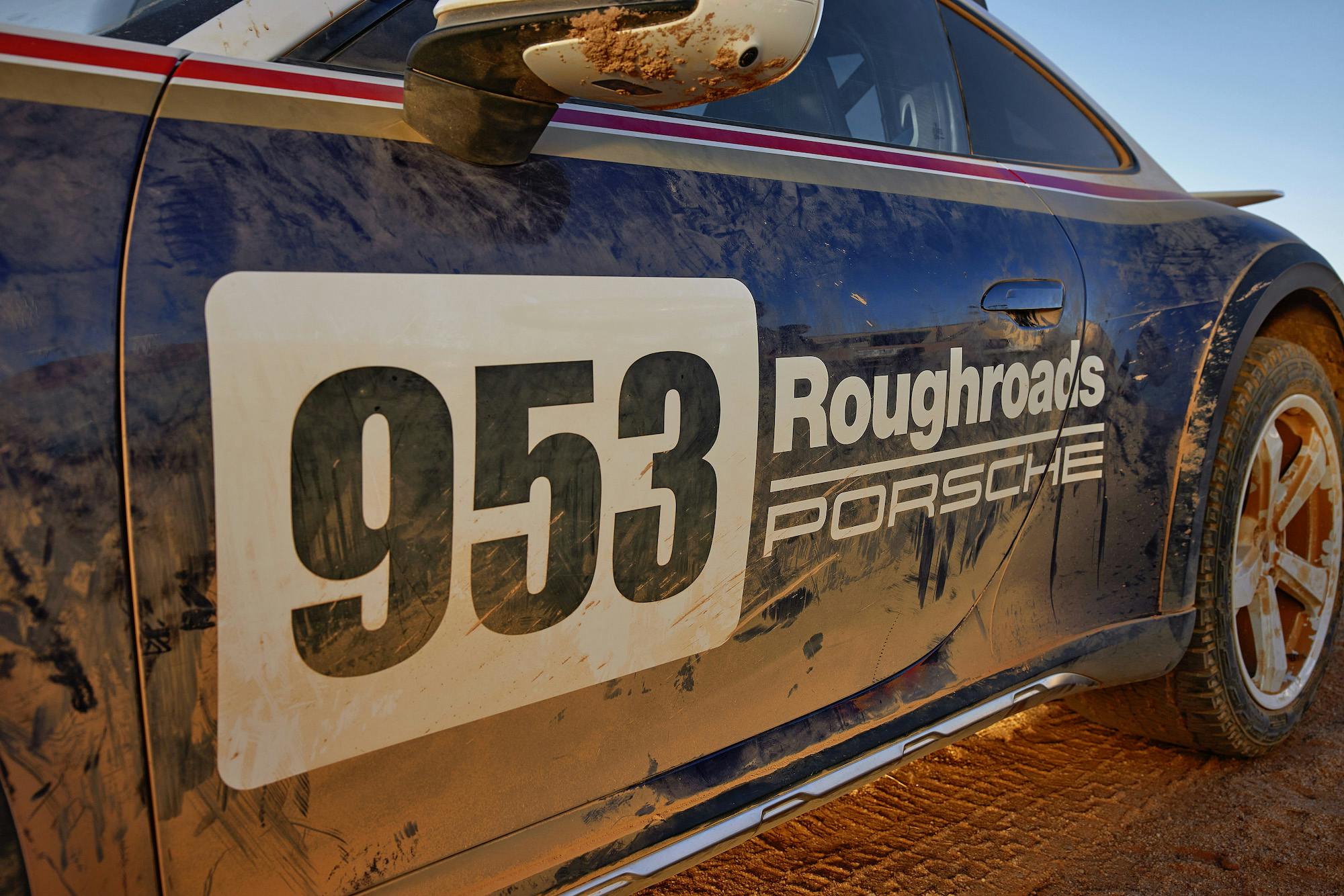
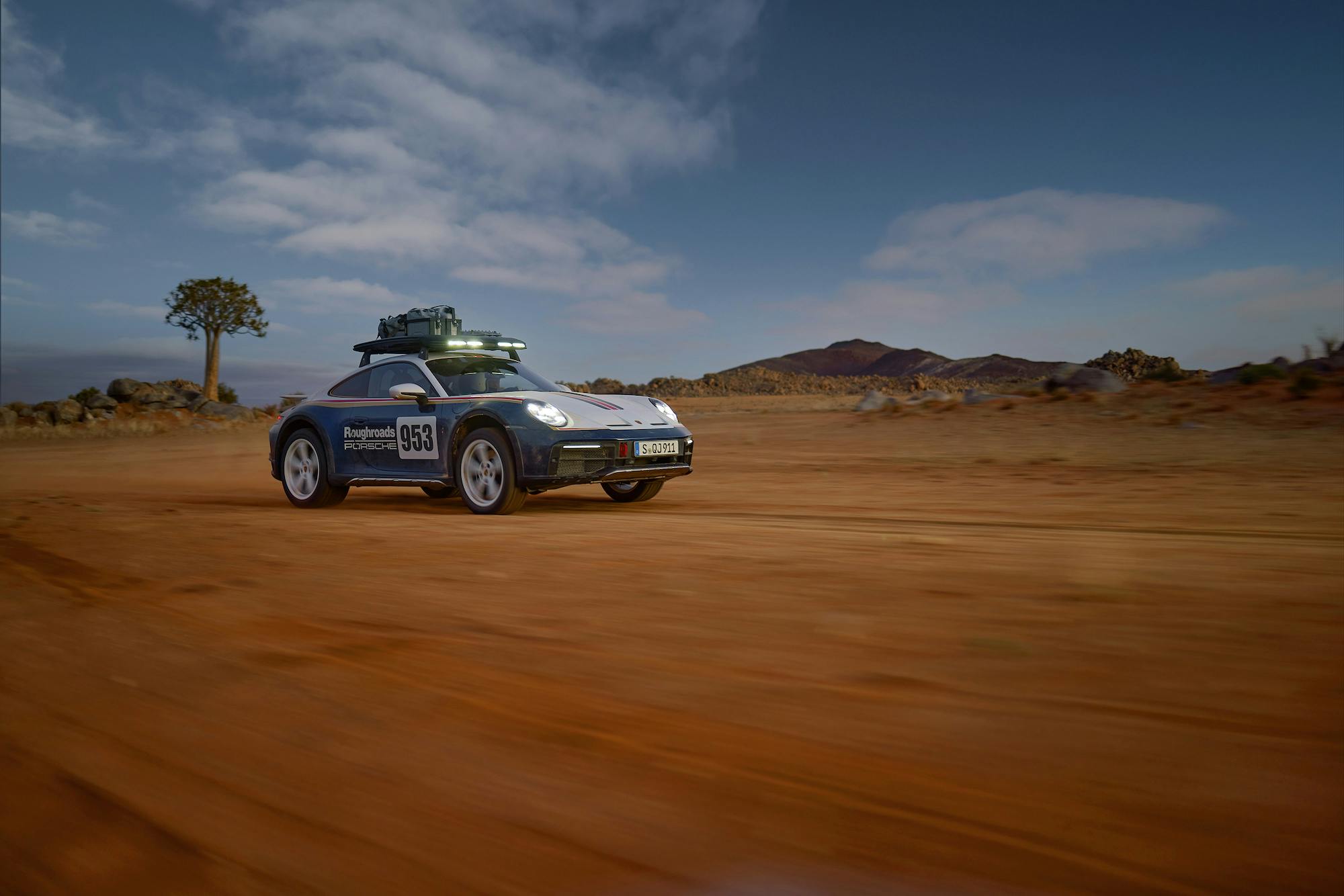
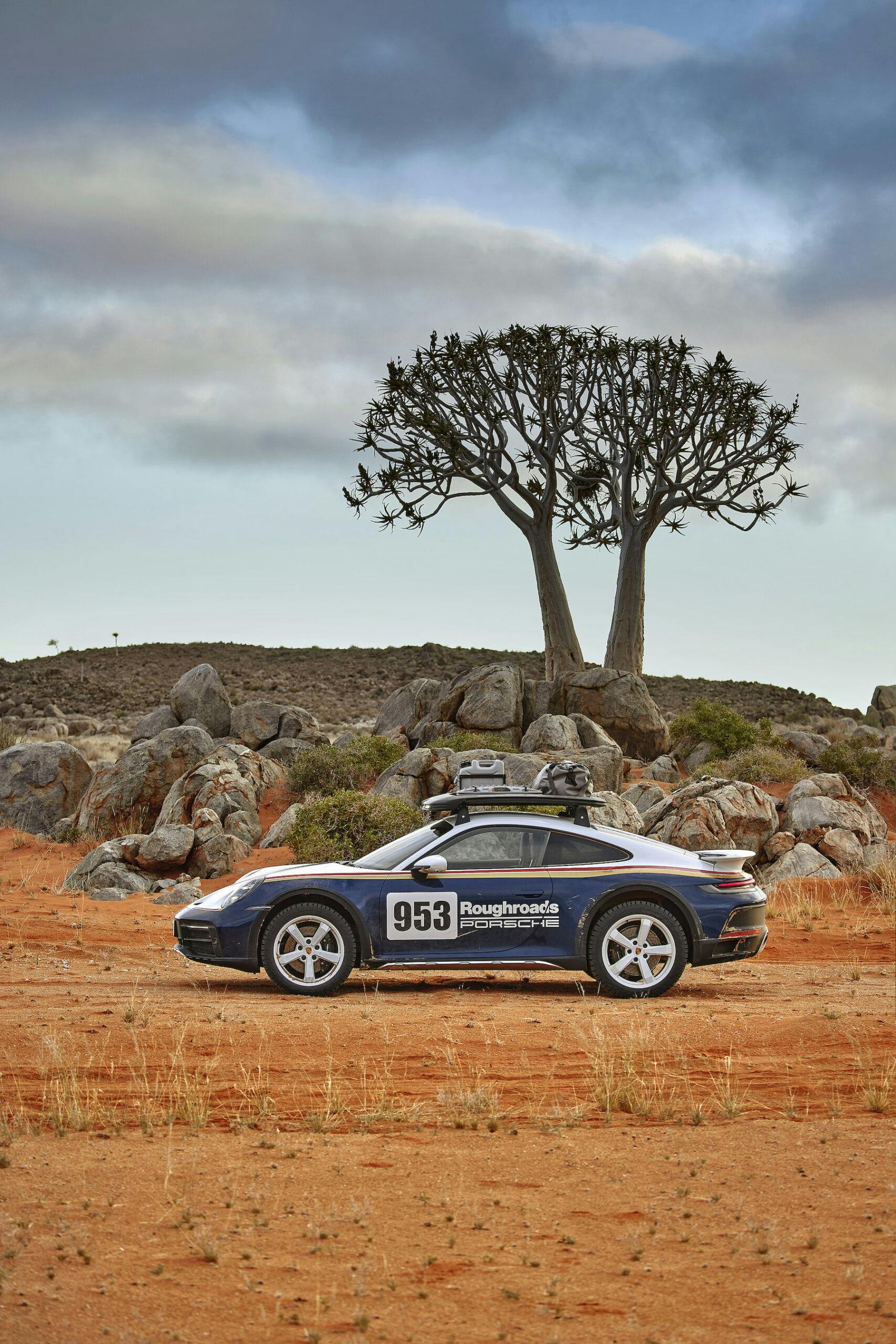

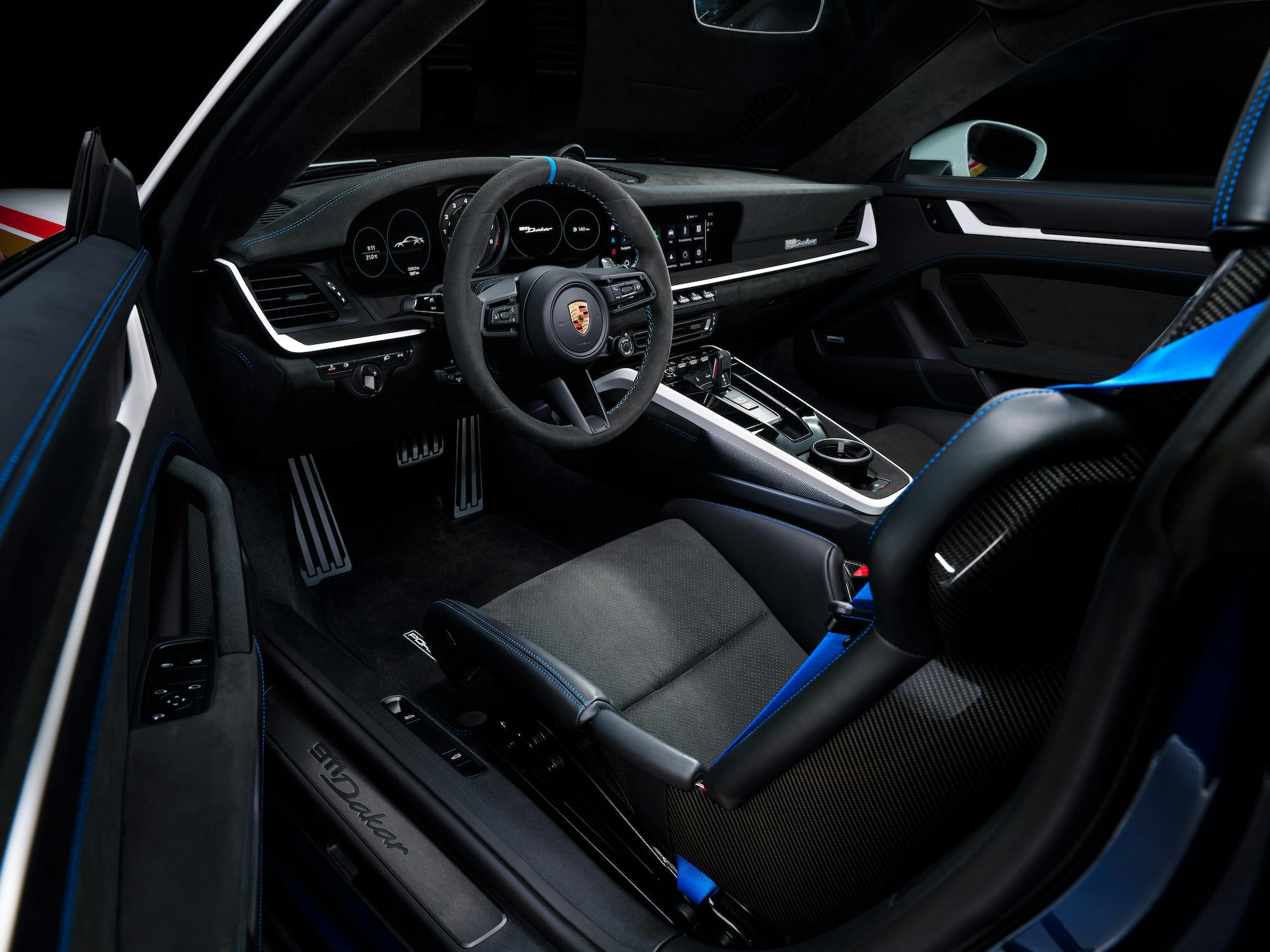
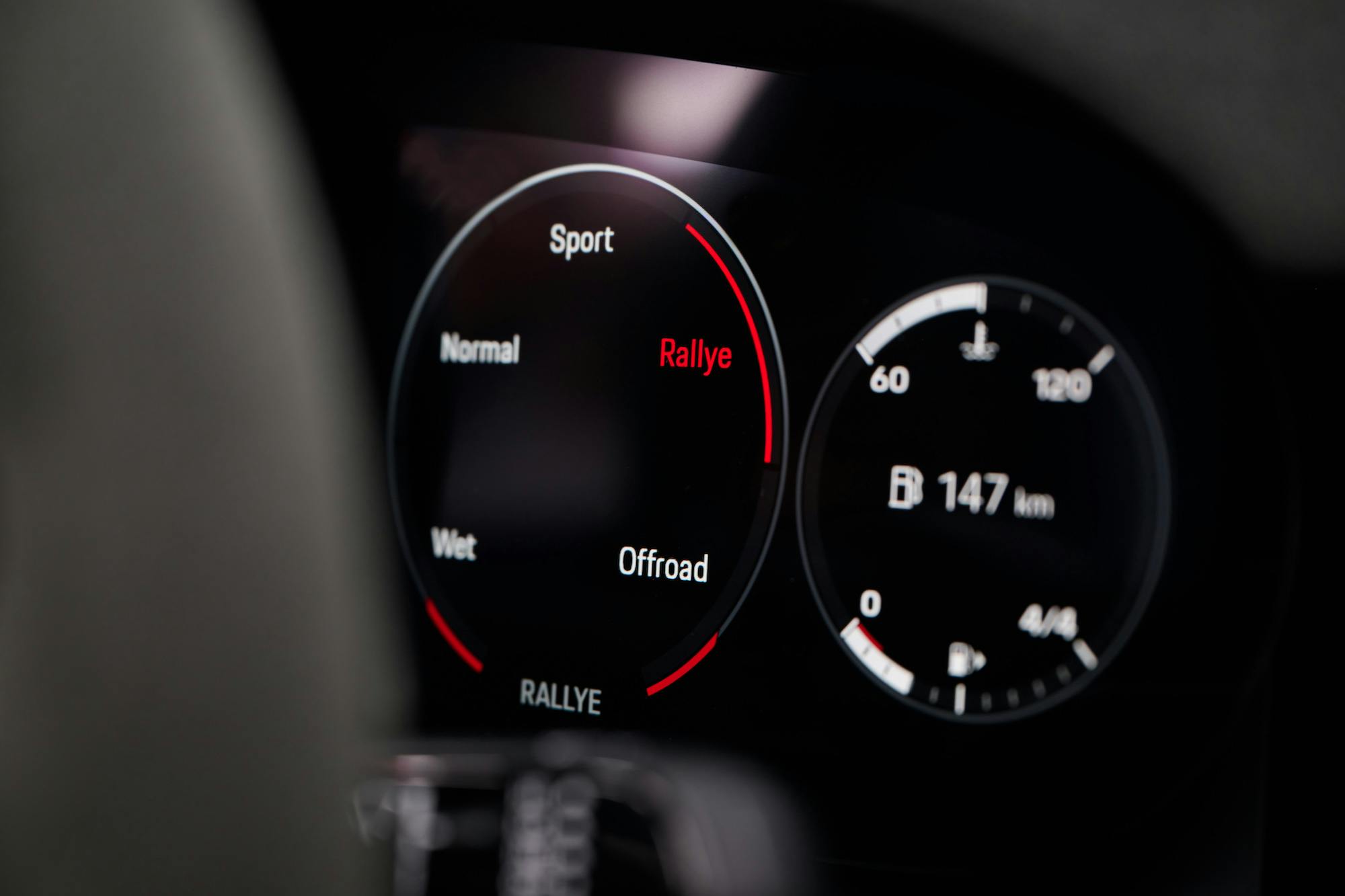
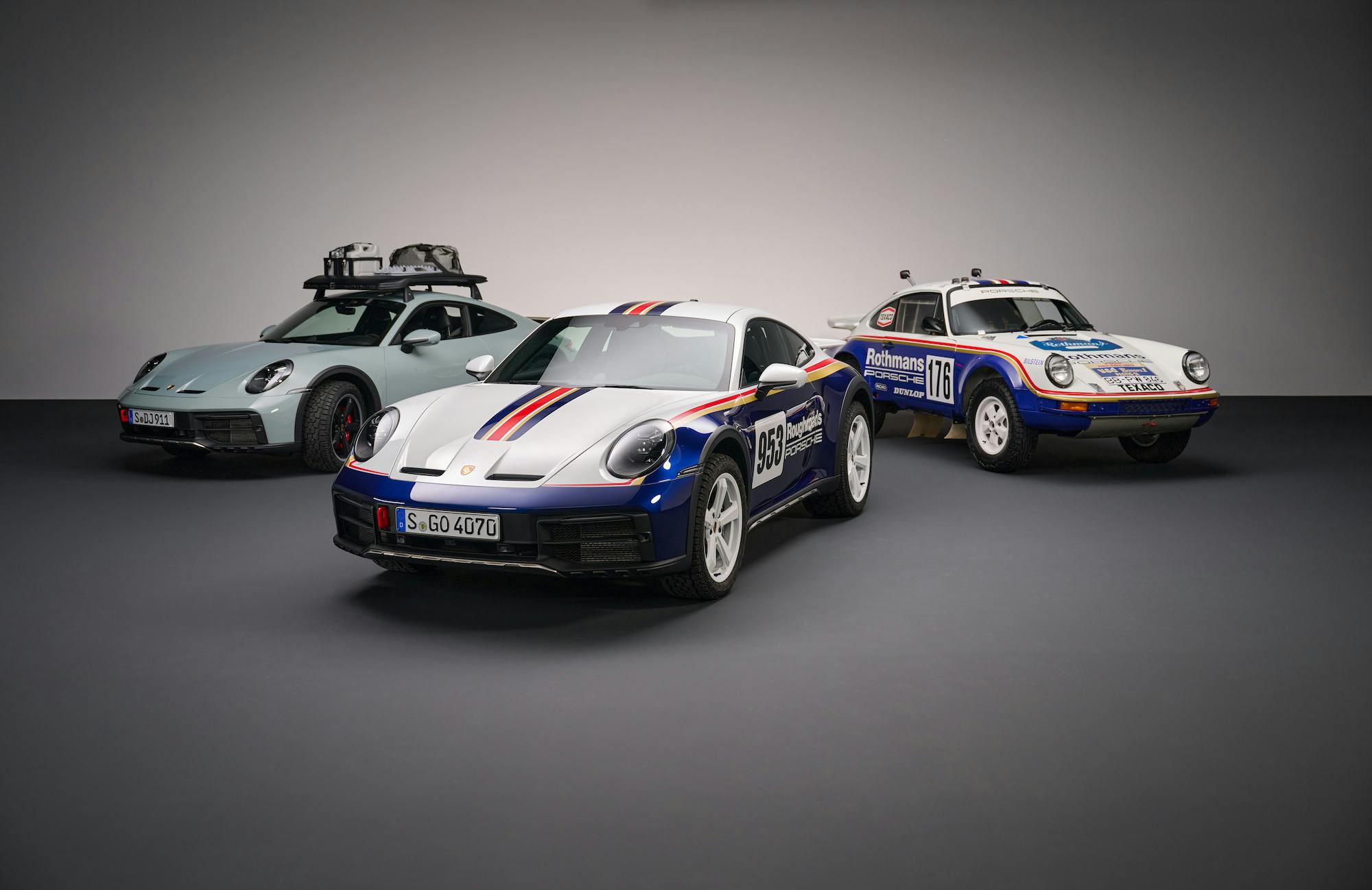

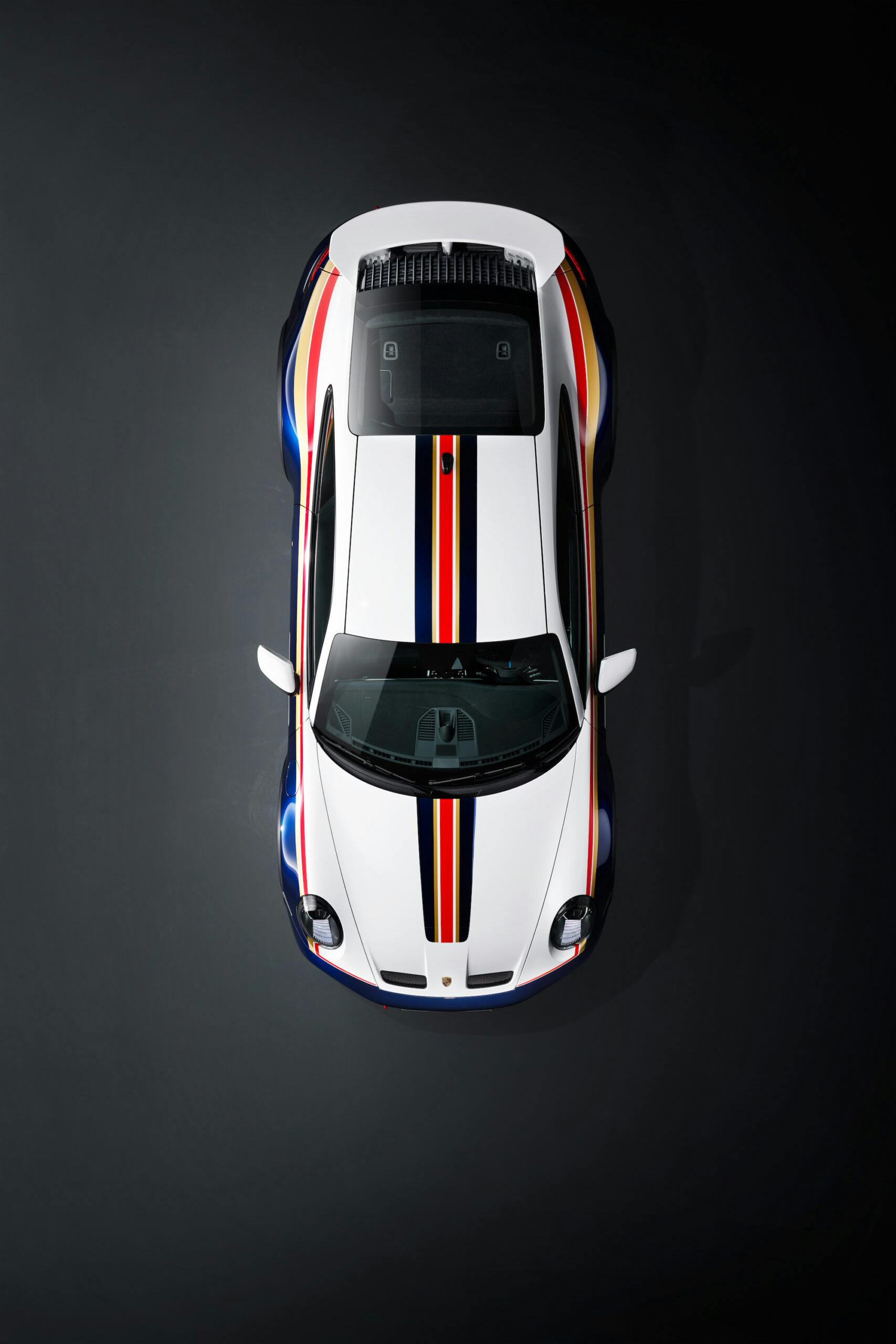
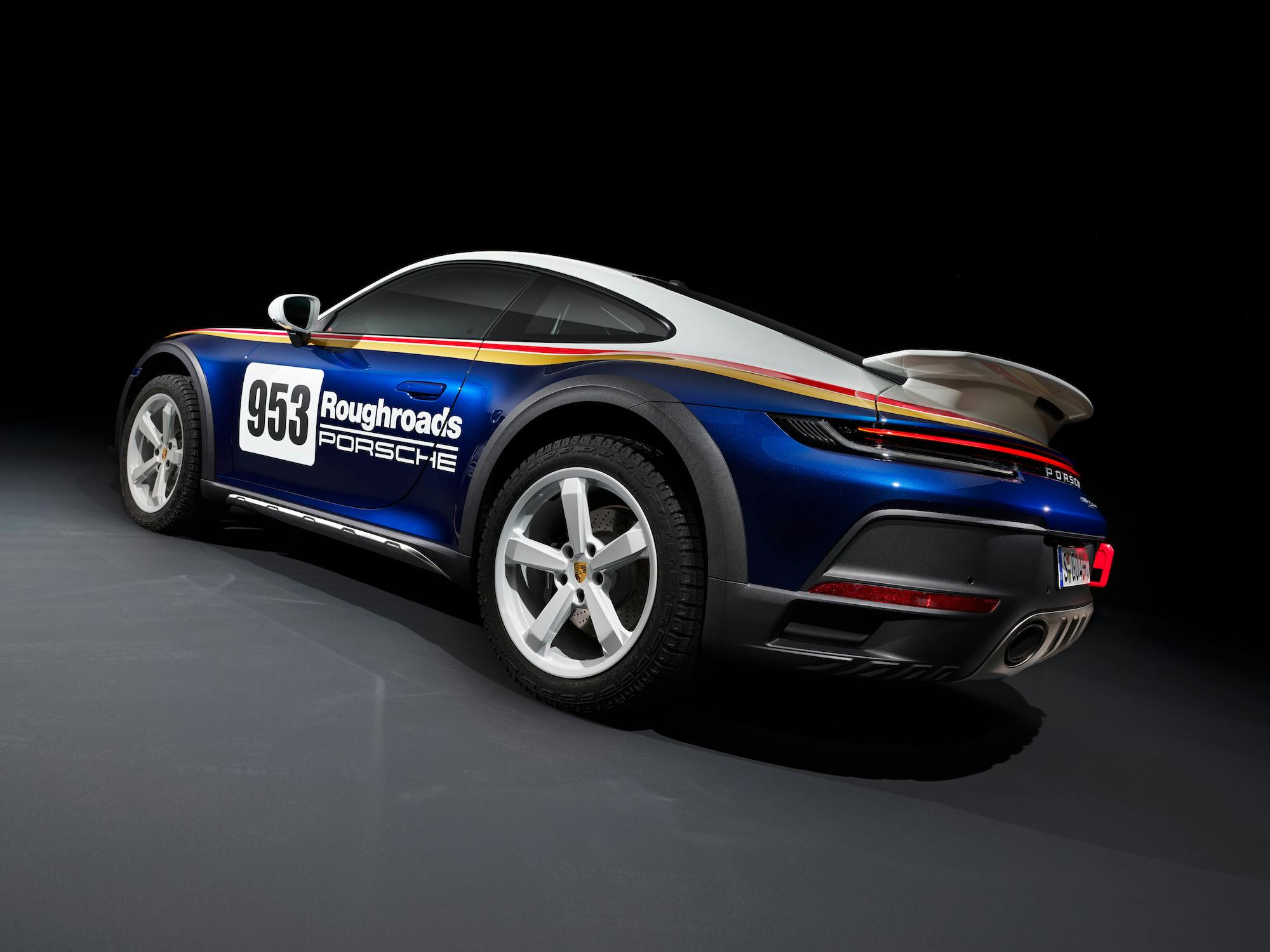
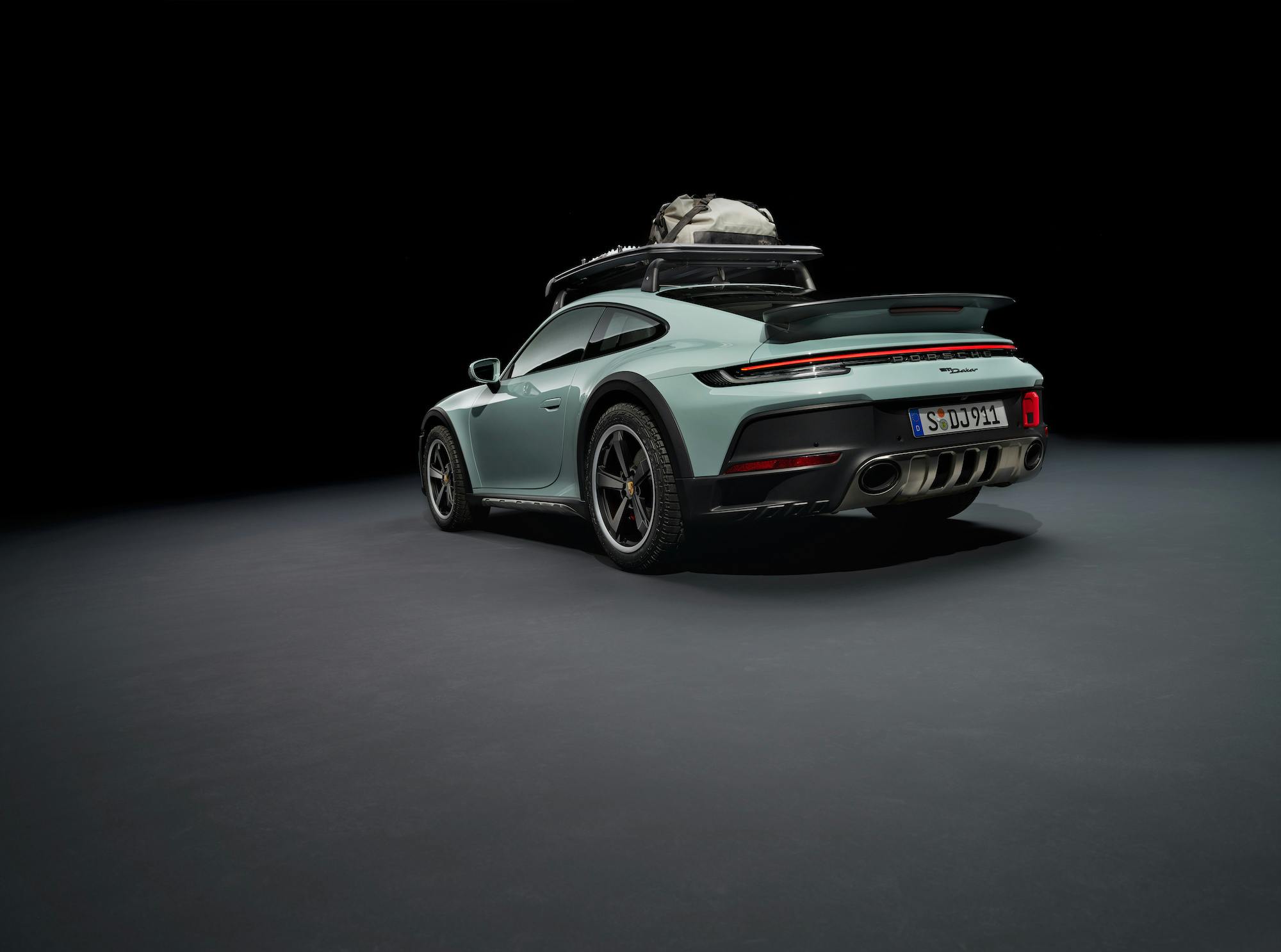
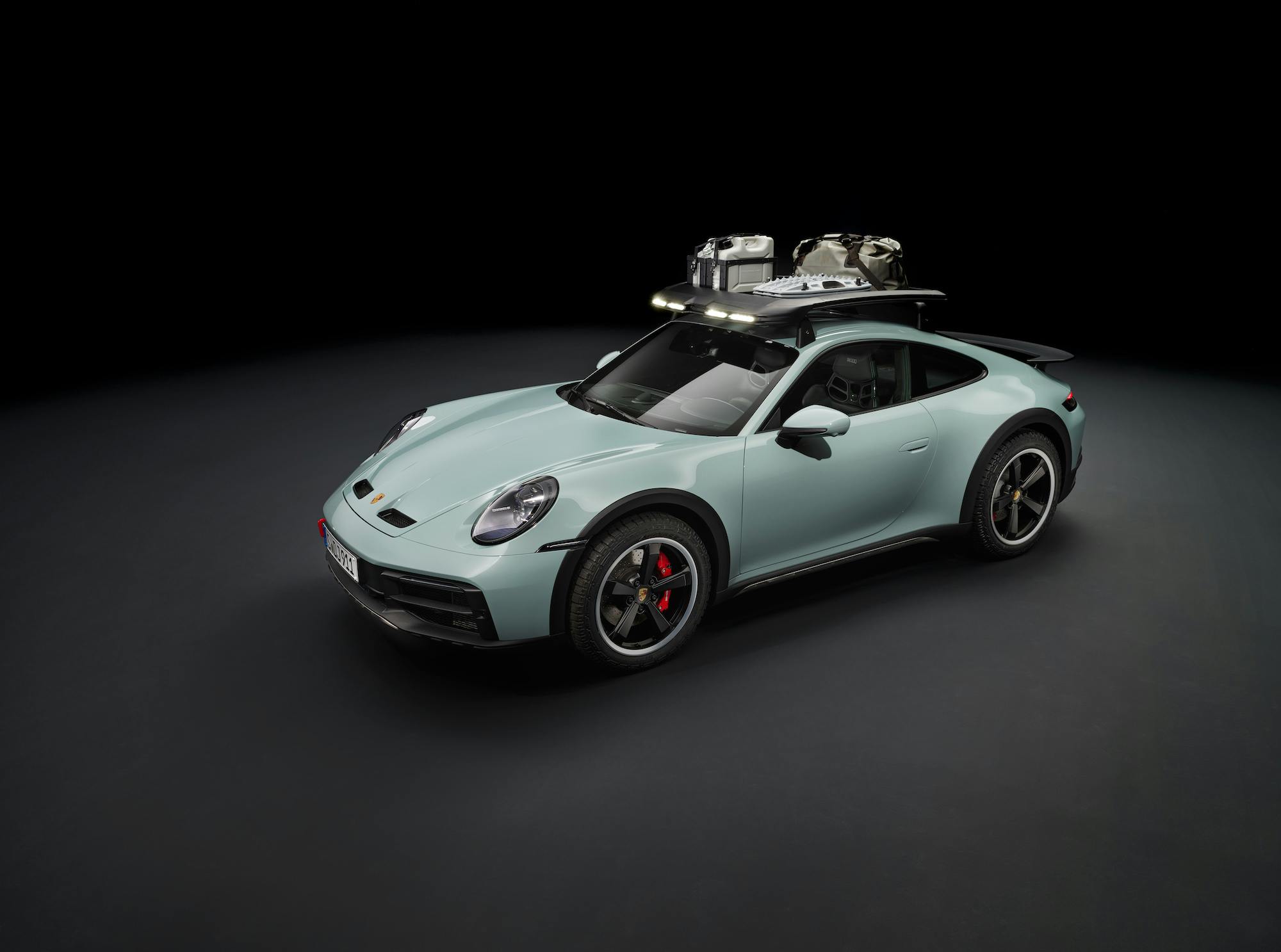
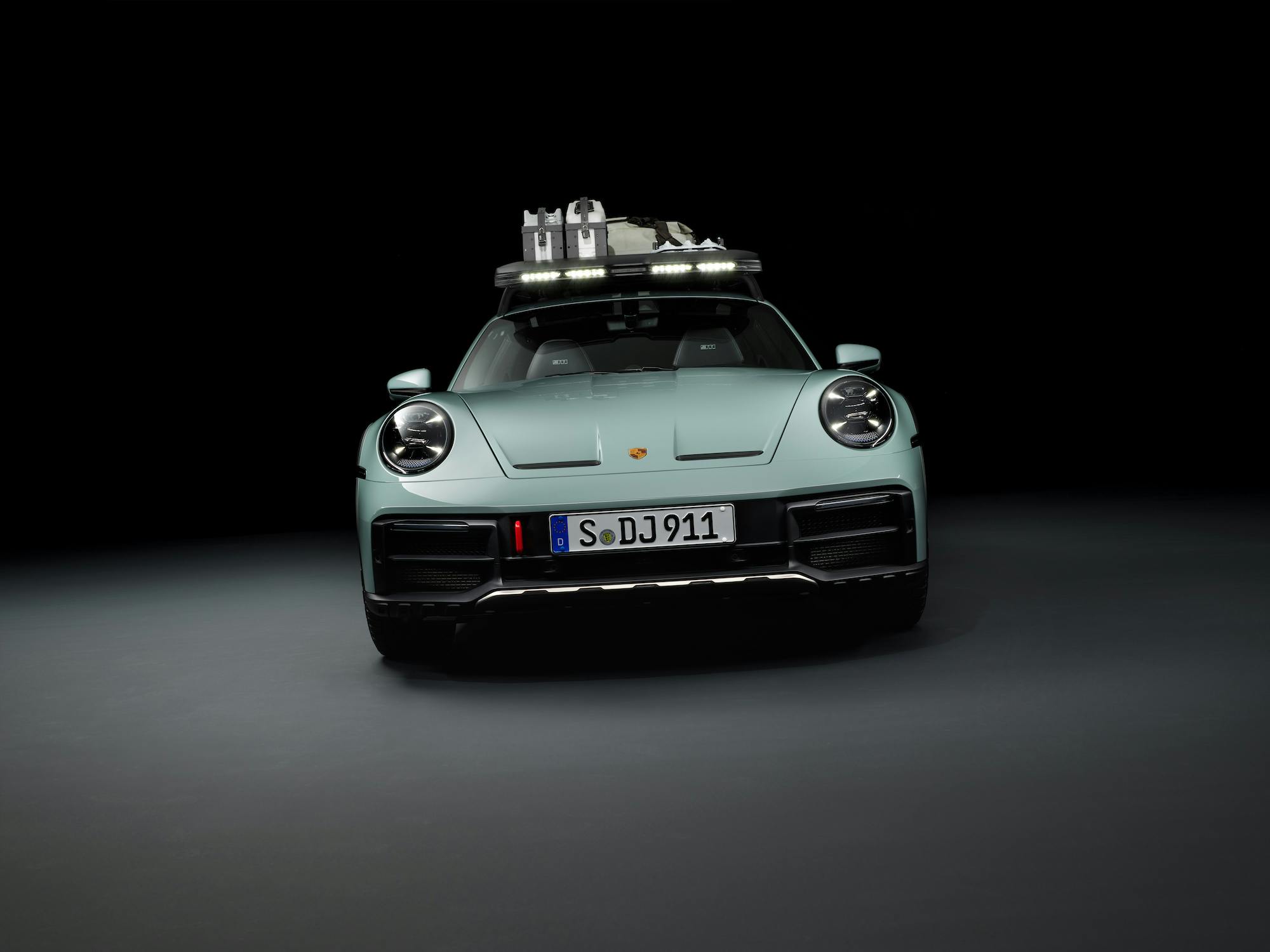
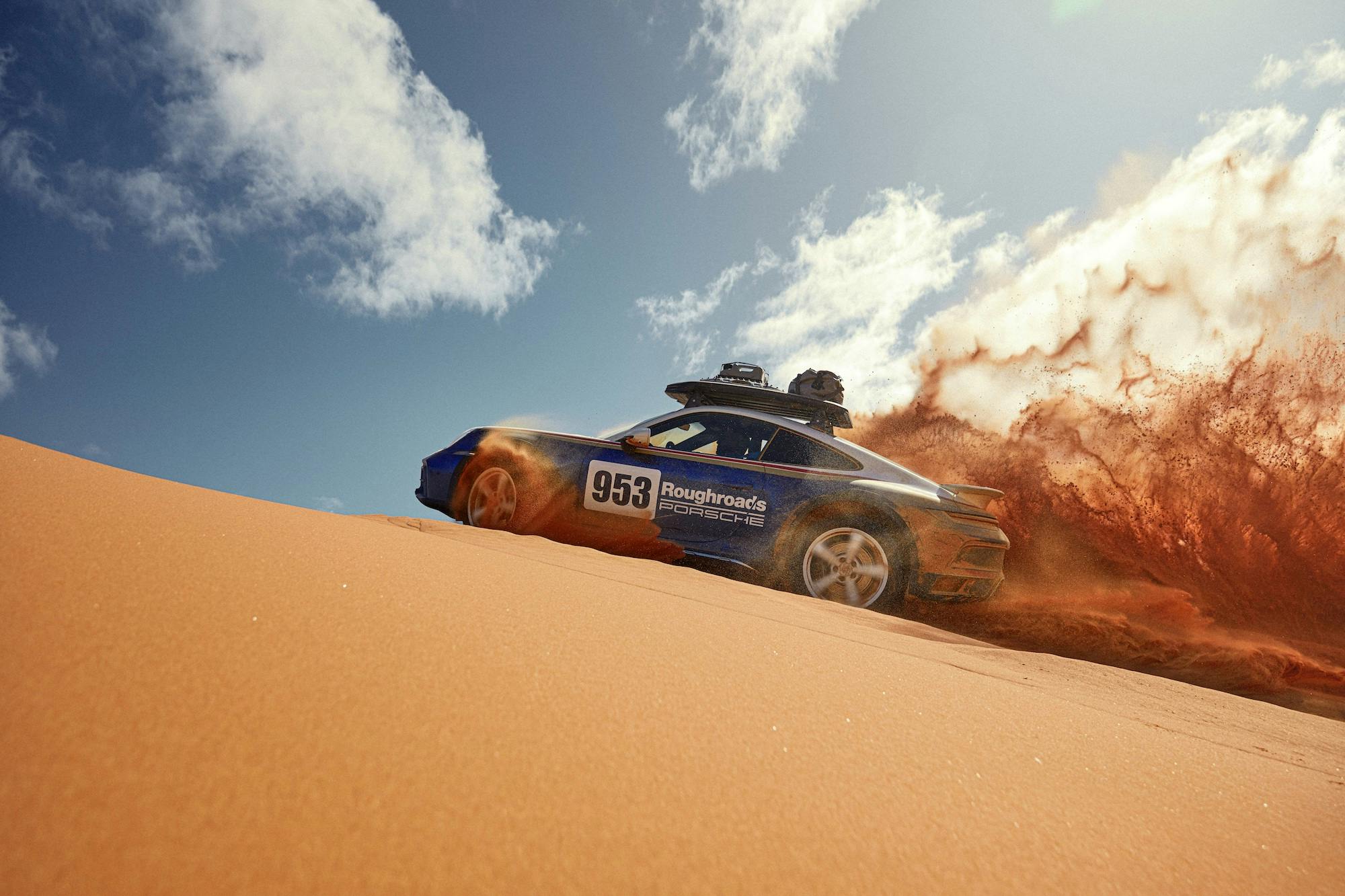
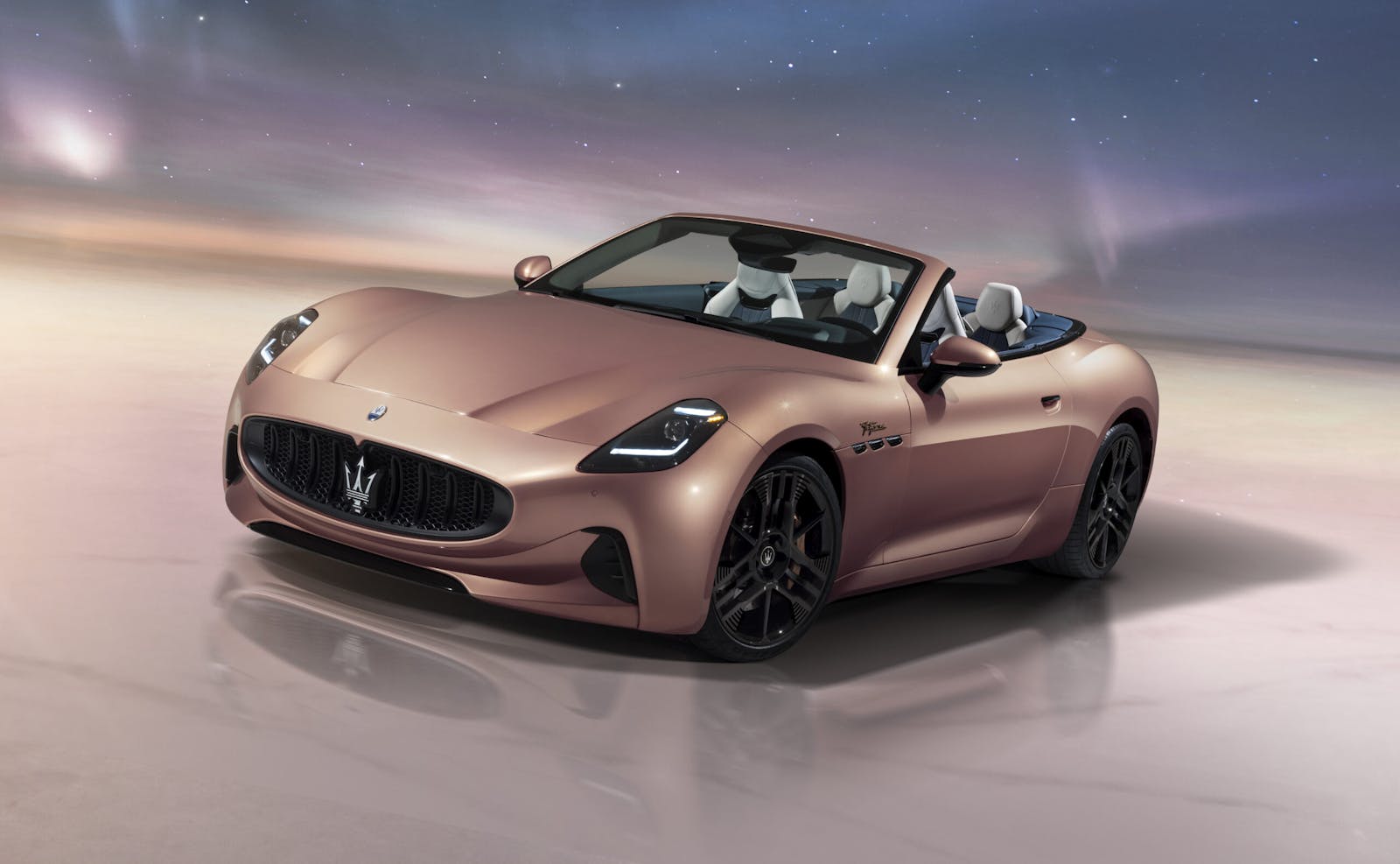
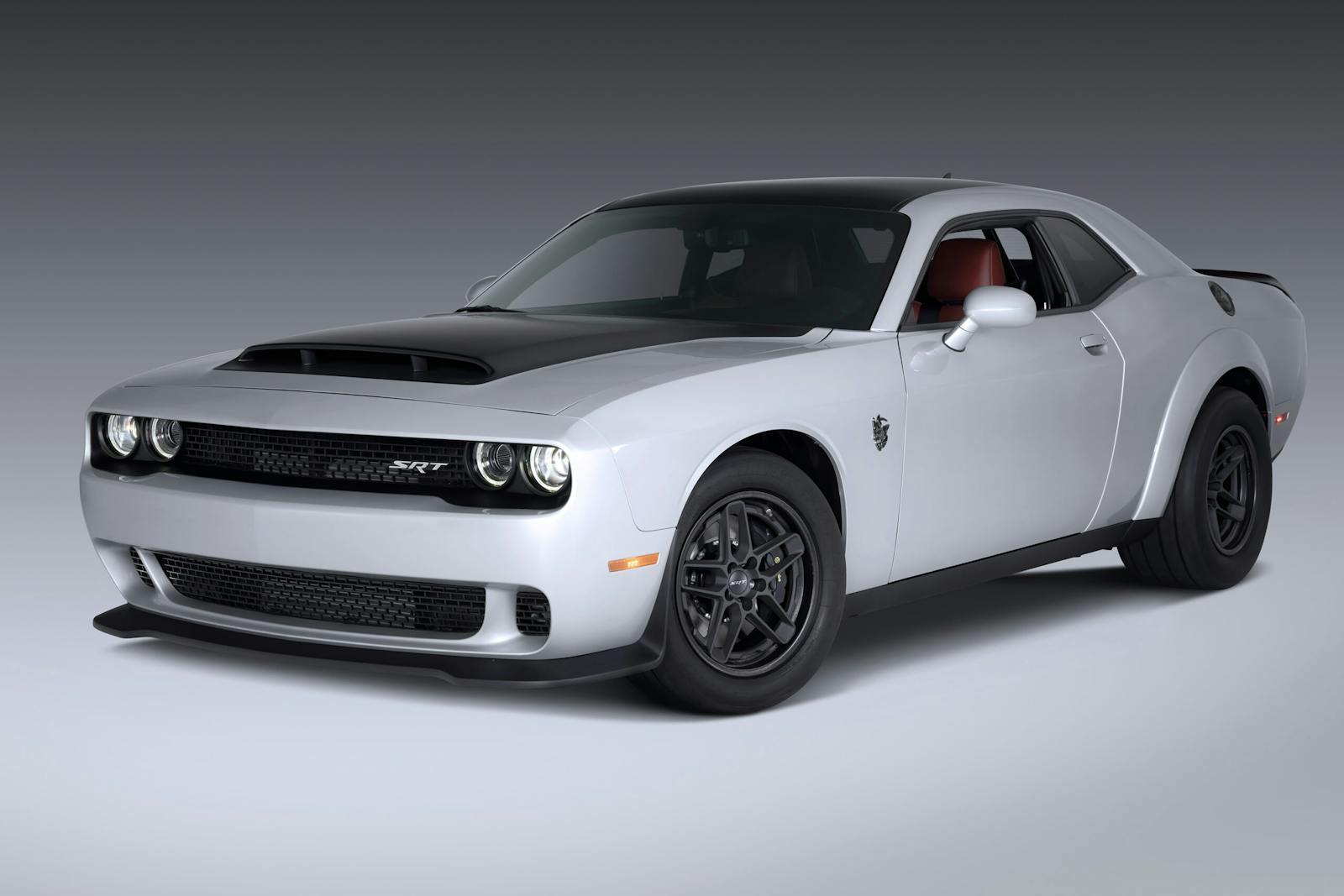
LOL LOL LOL = WAIT! Where are ALL the EV’s ??? All that waiting Sun and Sand and the EV’s are stuck back.. 75miles from Paree!
Gotta Ask: Why do we need to know about these $1/4 MIL cars that EURO’s Execs consider Dinosaurs?